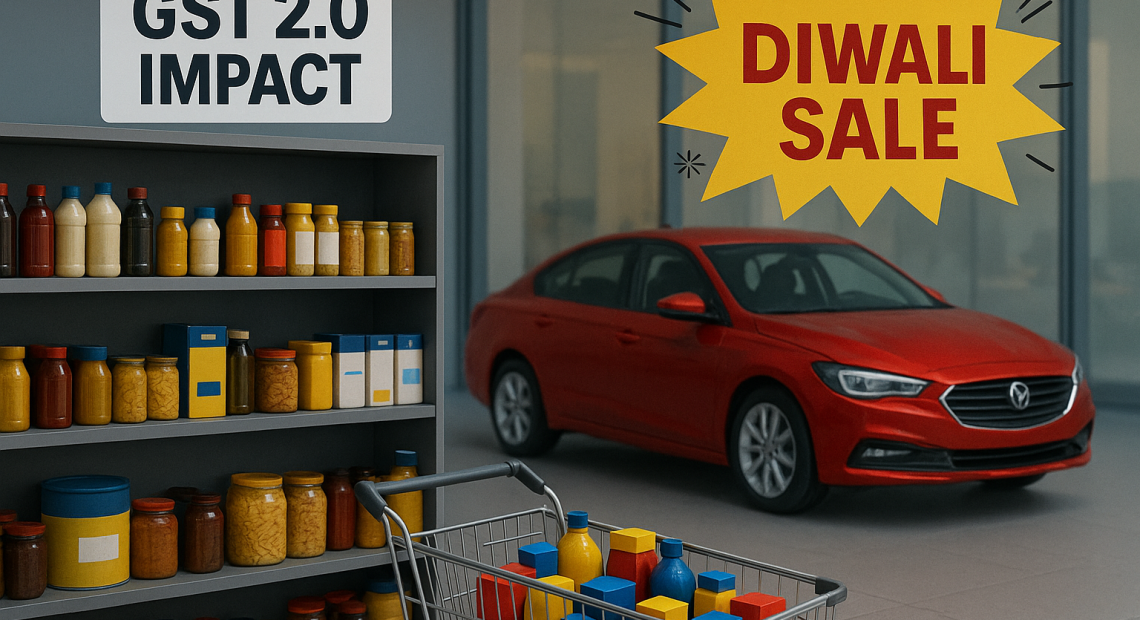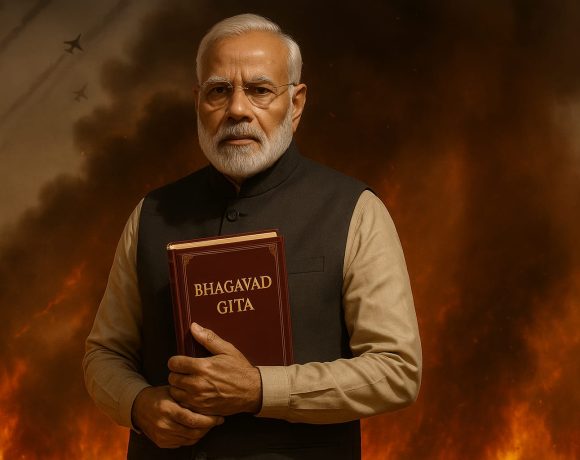
Diwali 2025 Was GST-Powered: Did Consumers Actually Save?
Diwali 2025 turned out to be India’s most lucrative festive season ever. Retail trade across the country touched a record ₹6.05 lakh crore, up 25 percent from last year’s ₹4.25 lakh crore. From bustling jewellery shops to crowded car dealerships, spending was at an all-time high. The timing was no coincidence. Barely a month before the festival season, the government rolled out GST 2.0 — the biggest tax reform since 2017.
The new structure promised to put more money in the hands of consumers, simplify compliance for businesses, and maintain revenue stability for the exchequer. But as firecrackers lit up the skies and cash registers rang, a crucial question emerged: did Indian households actually save money, or did GST 2.0 merely boost sentiment without delivering real relief?
The Record Sales Boom
Data from traders shows the sheer scale of Diwali 2025’s consumption story. Goods sales alone accounted for around ₹5.4 lakh crore, while services contributed nearly ₹65,000 crore. Sector-wise, groceries made up 12 percent, gold and jewellery 10 percent, electronics and electricals 8 percent, garments 7 percent, and other categories filled in the rest.
Automobiles were the standout performer. Tata Motors delivered over 1 lakh passenger vehicles in the festive fortnight between Navratri and Diwali, a 33 percent increase from last year. Maruti Suzuki sold more than 51,000 cars during the Diwali week, while Hyundai crossed 14,000 units. These were record-breaking numbers, unmatched in recent years. In comparison, Diwali 2024’s auto sales were sluggish, reflecting higher interest rates and stagnant demand.
The story was similar across consumer durables. Electronics retailers reported strong demand in mid-range televisions, refrigerators, and washing machines. Jewellers saw long queues and reported a double-digit surge in sales. On the surface, the message was clear: GST 2.0 had helped unleash India’s spending power.
GST 2.0 — The Tax Revolution
The reform introduced on 22 September 2025 reduced India’s confusing maze of four slabs into two primary ones: 5 percent and 18 percent. Basic essentials like food and medicines were placed under nil or 5 percent tax, while most goods and services were aligned to 18 percent. Luxury and sin goods were moved to a sharply higher 40 percent.
More than 400 products saw a reduction in GST rates. Packaged foods, dairy products, and everyday items were expected to become cheaper. Automobiles, consumer electronics, and several services also moved into lower slabs. The government positioned GST 2.0 as a tax rationalisation that would benefit both households and businesses while protecting revenue.
And indeed, collections have remained steady. Monthly GST revenue stayed above ₹1.8 lakh crore even after the rate cuts, showing that a wider base and better compliance offset the lower slabs.
The Consumer Reality
Yet, the question of whether consumers actually saw cheaper bills is complicated. A survey conducted in the weeks after the rollout highlights an uneven story.
- Packaged foods: Only about 1 in 5 consumers reported that prices dropped in line with GST cuts. Nearly half said they saw no change at all.
- Medicines: Around a quarter of buyers saw full benefit, while another quarter got partial benefit. The rest said prices were unchanged.
- Automobiles: More than half of car buyers confirmed they got the full GST benefit, with another 20 percent reporting partial relief.
Examples on shop shelves show this divide. A Bournvita pack priced at ₹30 was revised down to around ₹26.69, and an Oreo biscuit pack dropped from ₹10 to about ₹8.9. In contrast, biscuit makers like Parle chose not to cut the ₹5 price point but instead increased pack weight, giving more product at the same price. Amul announced direct price reductions on select dairy products, while other companies held back.
This explains the contradiction: India spent more this Diwali, but the extent of actual savings varied depending on what you bought. If you were in the market for a car or refrigerator, you likely felt the tax relief. If you bought a pack of biscuits or medicines, you may not have noticed much difference.
The Winners and Losers
The winners of GST 2.0’s first festive season are clear. The automobile sector benefitted the most, with record deliveries. Consumer durables saw a strong rebound. Government finances remained robust, as revenue collections did not dip despite lower rates.
The losers are equally clear. Consumers of FMCG and essentials have not felt the promised savings, as retailers and manufacturers have been slow to cut MRPs. Small businesses, especially in the unorganised sector, continue to report compliance stress despite slab simplification. Complaints of “no GST benefit” have already crossed several thousand on consumer helplines.
The GST 2.0 Report Card
Statscope India Research evaluated GST 2.0 across five parameters. The overall score: 73 out of 100.
| Parameter | Weight | Score | Comment |
|---|---|---|---|
| Policy & Structural Reform | 25 | 20 | Simplification achieved, but exemptions remain |
| Compliance & Ease of Doing Biz | 20 | 15 | Filing smoother, SMEs still struggling |
| Price Transmission to Consumers | 20 | 10 | Strong in autos, weak in FMCG |
| Consumption & Economic Impact | 20 | 16 | Record Diwali sales prove demand revival |
| Revenue Stability | 15 | 12 | Collections steady above ₹1.8 lakh crore |
Conclusion: Cautious Optimism and Lessons
GST 2.0 has clearly energised India’s consumption cycle. The record Diwali sales, robust auto deliveries, and steady tax collections show that the reform succeeded in restoring confidence. But the reality on the ground is more mixed. Many households have not yet seen savings on everyday essentials.
Lessons for policymakers are clear:
- Enforcement must be stronger to ensure GST cuts reach consumers and not just corporate margins.
- Compliance must be simplified further to relieve pressure on small businesses.
- Consumer trust must be restored by making tax benefits visible in everyday purchases, not hidden in repackaging strategies.
The cautious optimism comes from the fact that GST 2.0 has delivered about three-quarters of its promise. The final test lies in whether the remaining quarter — the part that affects household budgets — will follow.
Darshan Walawalkar, Partner at Statscope India Research, observes: “GST 2.0 powered the headlines with record sales, but households will judge it by what happens in their kirana bill. That gap still remains.”
Arun Durairajan, Partner at Statscope India Research, adds: “The reform’s foundation is solid — collections are strong, and consumption is back. Now it’s about enforcement and fairness, ensuring the benefit doesn’t stop at the company balance sheet but reaches the consumer’s pocket.”


















